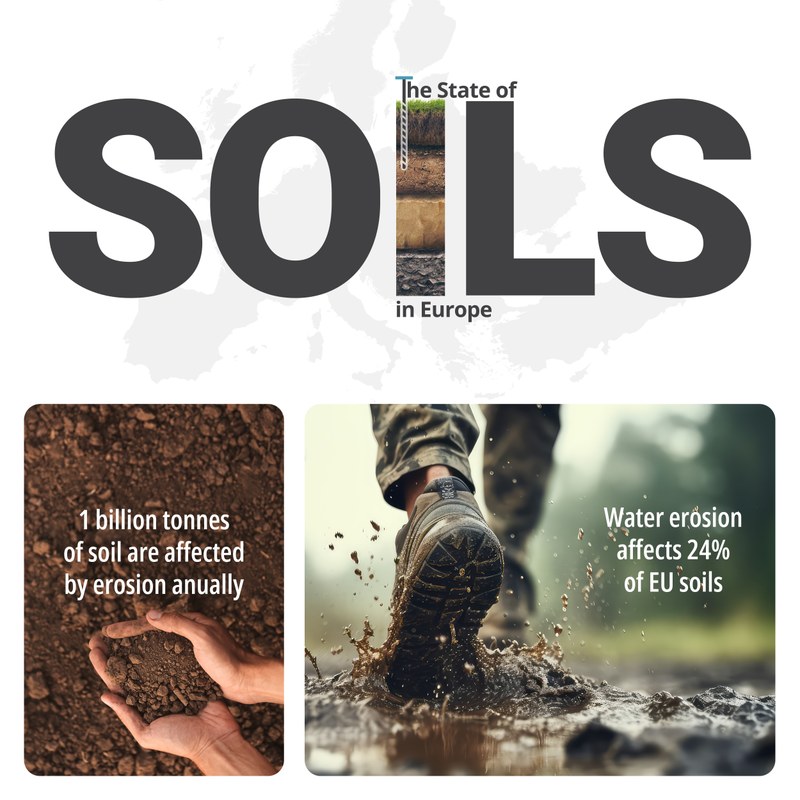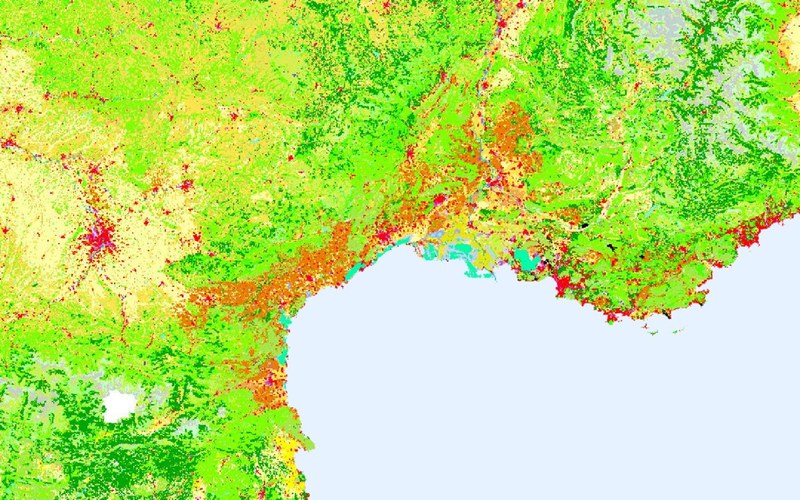All official European Union website addresses are in the europa.eu domain.
See all EU institutions and bodiesThe main function of the food system and its primary sector, agriculture, is to satisfy the basic human need for food, but sustainable food systems also maintain ecosystem health and contribute to social well-being. At the same time, the food system is one of Europe’s major systems of production and consumption, causing over one-fifth of all environmental and climate impacts.
Modern food systems constitute complex global networks of production, processing, manufacturing, supply, retail, services, and consumption. Agriculture is the main food production sector complemented by fisheries and aquaculture. The food system includes many other sectors and actors involved in the processing, distribution, transport and consumption of food.
Global food chains, market competition, industrial processes and increased productivity have turned modern agriculture into a sizeable economic sector but this has also created challenges for the environment and climate. For example, agriculture is the source of 11% of all greenhouse gases emitted in the EU, and it remains a significant contributor to the emissions of harmful air pollutants, such as ammonia.
Agriculture is the most significant pressure impacting both surface and groundwaters.
Agriculture, fisheries and the food system are also key drivers of biodiversity and habitat loss through land conversion, soil degradation, overfishing, water abstraction, and chemical and nutrient pollution. Moreover, human health is directly dependent on the sustainability of the food system. Unhealthy diets, exposure to chemical residues in food and packaging, and contamination of drinking water are just some examples of this critical link.
At the same time, agricultural production and the resilience of the food system are themselves dependent on natural resources and processes, and sensitive to environmental degradation and climate change. Reducing these environmental pressures and adapting to their impacts is, therefore, necessary in order to protect food security, farming land and farmers’ livelihoods.
Agriculture and food systems also deliver important benefits to people and the environment, including through the accumulation of CO2 as carbon in vegetation and soils, conserving semi-natural habitats and wildlife species, and more efficient technologies, social innovations, and circular economy practices. These solutions must now be incentivised and scaled up, paying attention to the risk of trade-offs and maximizing co-benefits whenever possible.
Solutions for restoring Europe’s agricultural ecosystems
This EEA briefing presents evidence-based examples of key options available to farmers to help restore Europe’s ecosystems and enhance the ability of the agricultural sector to cope with increasing climate change impacts like droughts and floods as well as boosting productivity.
The study says introducing some key agricultural practices can prove to be a win-win for both farmers and local nature, delivering better resilience and restoring local ecosystems like grasslands, hedgerows or creeks.


Agriculture: where next?
While global food chains, market competition, industrial processes and increasing productivity have turned agriculture into a profitable economic sector, it is also one of the biggest contributors to environmental and sustainability challenges in Europe and worldwide. In tandem, the COVID-19 pandemic, recent geopolitical developments in Europe and socio-economic trends have driven attention towards agriculture and food systems. Our briefing 'Rethinking agriculture' reflects on what makes agriculture unsustainable today — and the types of agriculture we may want to preserve and support.
This briefing is part of an EEA series called 'Narratives for change', exploring the diversity of ideas needed to make our society more sustainable and fulfil the ambitions of the European Green Deal.
Reducing impacts of pesticides
Widespread pesticide use is major source of pollution — contaminating water, soil and air, driving biodiversity loss and leading to pest resistance. Human exposure to chemical pesticides is linked to chronic illnesses, such as cancer, and heart, respiratory and neurological diseases.
The EEA briefing ‘How pesticides impact human health and ecosystems in Europe’ summarises the latest knowledge on how chemical pesticides impact our health and the environment and presents good practices to reduce their use and risk across Europe. It showcases good practices for how to reduce pesticide use and manage the associated risks without jeopardizing food supply.


Urgent action needed to reverse soil degradation in Europe
Soil degradation threatens our competitiveness, food security, agricultural productivity, biodiversity, and resilience to extreme weather events and climate change. Joint efforts at EU, national, and local level focus on restoring soil health.
Launched at the EU Soil Observatory Stakeholder Forum, the 2024 State of Soils in Europe report assesses the state of soil degradation across the EU and other countries in the European Economic Area, including Ukraine, Türkiye, and the Western Balkans. The report shows alarming status and trends, with soil degradation getting much worse in recent years, and highlights the need for immediate action to reverse this trend.
The State of Soils in Europe report is a collaboration between the Joint Research Centre and the European Environment Agency.

Share of the utilised agricultural area in the EU-27 used for organic farming over the period 2012-2021
Source
Organic farming area in Europe: Austria in the lead
The European Green Deal set the target that, by 2030, 25% of the EU’s agricultural area should be under organic farming.
The share of the EU’s agricultural land under organic farming increased from 5.9% in 2012 to 9.9% in 2021 as a result of an increasing demand for organic products and policy support. To meet the target, the pace will need to almost double in the remaining years up to 2030. Although the policies currently in place are expected to increase the share of organic farming, this will not be enough to meet the target.
Our indicator also shows this information by country and how it changed between 2012 and 2021.
Wine production in Europe: What can Copernicus tell us?
The Copernicus Land Monitoring Service’s Corine Land Cover (CLC) product provides detailed, harmonised maps of Europe’s land cover characteristics—including agricultural information such as arable land, permanent crops and pastures. With its wall-to-wall coverage and extensive time series, CLC is designed to support a broad range of environmental and policy applications.
For example, in the Mediterranean wine regions of southern France, CLC data has been used to monitor vineyard landscapes and assess environmental threats such as the spread of Pierce’s disease, a pest damaging to grapevines. This information enables targeted measures to protect wine production, showcasing CLC’s value in safeguarding both agriculture and cultural heritage.


Tackling food waste
Some 57 million tonnes of food waste (127 kg/inhabitant) are generated annually with an associated market value estimated at EUR 130 billion. Food waste means that all the resources used to produce food — water, soil and energy — are also wasted. Also, the pollutants and greenhouse gases released during production, transport and marketing contribute to environmental degradation and climate change.
Read more about food waste and how it can be reduced in a circular economy.
Healthy seas, thriving fisheries: transitioning to an environmentally sustainable sector
Europe’s regional seas are generally in poor condition which threatens the long-term competitiveness and sustainability of the European fishing industry. Overfishing, bycatch and habitat degradation drive the decline of marine biodiversity in Europe’s seas, together with pressures from eutrophication, pollution and climate change.
The EEA briefing provides an overview of the environmental state of European fisheries and identifies concrete options to help achieve a competitive and sustainable fishing industry in the long-term.

